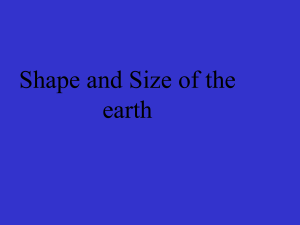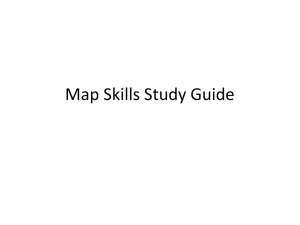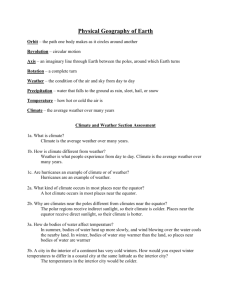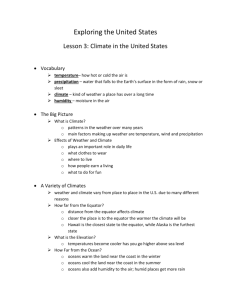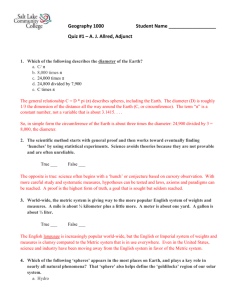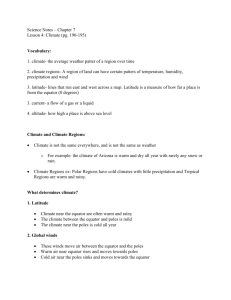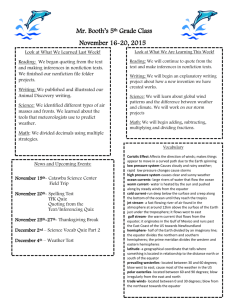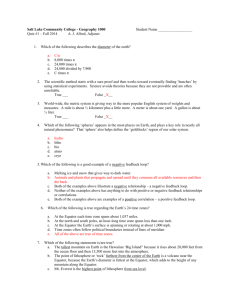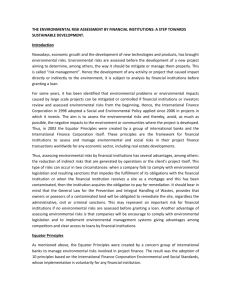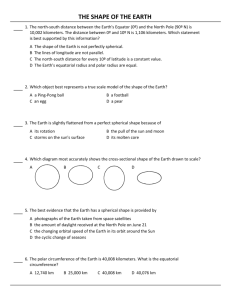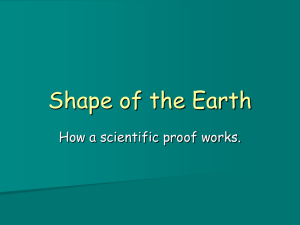Earth`s Shape and Size - Hicksville Public Schools / Homepage
advertisement
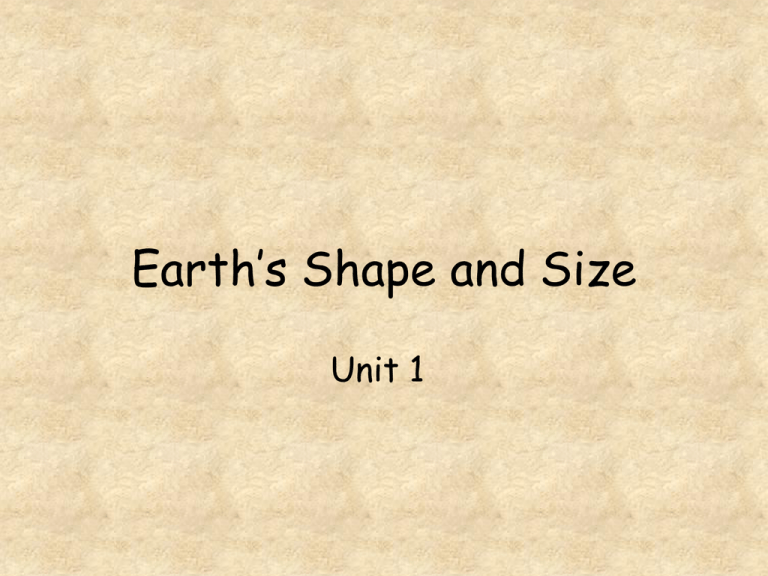
Earth’s Shape and Size Unit 1 The Earth’s Shape • Earth’s shape is nearly spherical (Oblate Spheroid) • It is flattened at the poles and bulging at the equator • This makes a person weigh slightly more at the poles than at the equator • Earth’s surface is very smooth • The height of Mt. Everest is only 7/10,000 of Earth’s diameter Ancient Observations of Earth • Shadow of Earth during an eclipse • Position of the stars as travelers moved north or south • A ship’s mast disappeared last as it sailed towards the horizon • Aristotle, as early as the 3rd century BC concluded that the earth was a sphere. Using the North Star • The North Star (Polaris) appears to increase in altitude as you travel north • It is always visible due north to an observer north of the equator – 900 for someone at the North Pole – 00 for someone at the Equator • If the earth were flat, Polaris would appear the same to everyone. Today…. • Photographs from space are the best way to see the shape of the earth Pre Lab Info • Roundness Ratio – Tells us how close something is to a perfect circle – A perfect circle would have a roundness ration of 1 because the diameter would be the same in all directions Pre Lab Info • Scale Models are concrete representations of an object that is made in proportion to the object – They may be larger (ex. Model of an atom) – They may be smaller (ex. Globe) Finding the Proportions • Think ratio: Part to whole = Part to whole • Matchbox cars are made on a ratio of 1:59 • This means that the Matchbox car is 59 times smaller than the real car. • Using the Matchbox car, figure out how big the real car is. • 1/59 = 7.1/X 7.1 cm • X = 418.9 cm • How many meters is this? • 4.189 m
